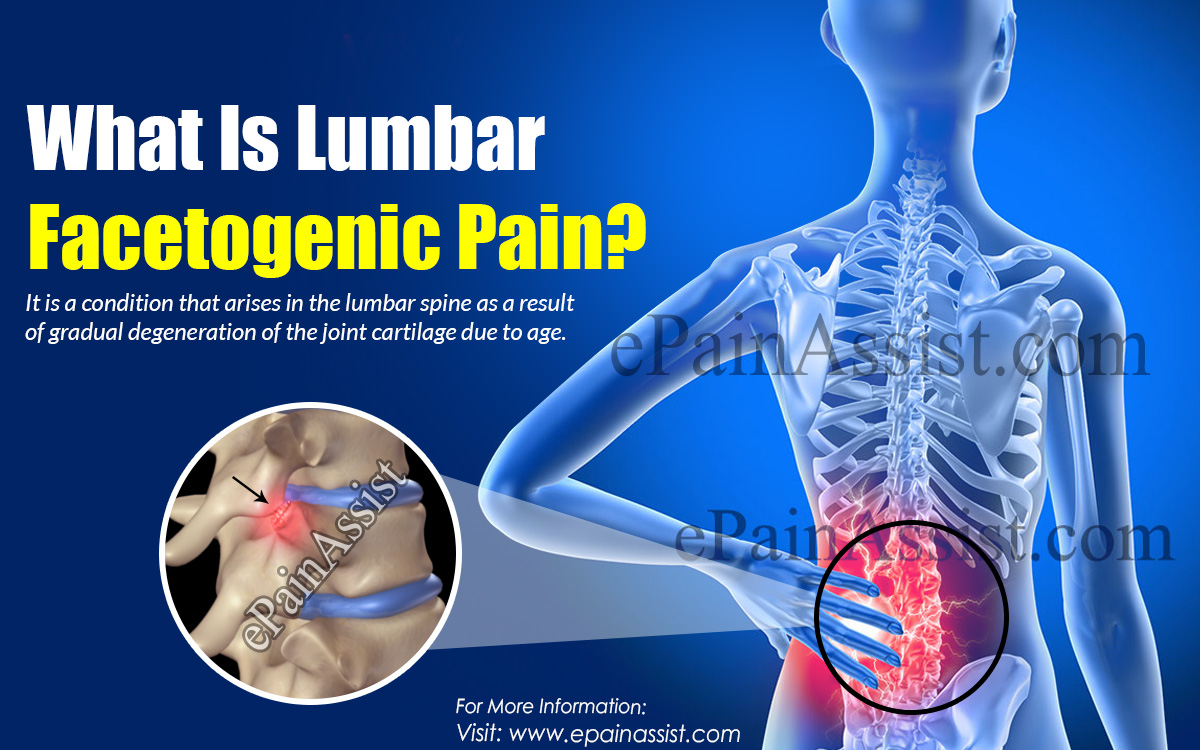What Is Lumbar Facetogenic Pain?
Lumbar Facetogenic Pain is a condition that arises in the lumbar spine as a result of gradual degeneration of the joint cartilage due to age.1 The function of the lumbar facet joint is to make the back more flexible. It allows an individual to lift, bend, twist, and turn day in and day out. However, as a result of age, the facet joints in the spine gradually deteriorate and lose its capacity to facilitate normal flexibility of the spine. This is what is termed as a facet disease.
Facet disease gradually causes breakdown of cartilage which causes the intervertebral discs to rub against one another resulting in pain. This is what is termed as Lumbar Facetogenic Pain.
As a result of the intervertebral discs rubbing against each other, there is development of osteophytes which are growth of extra bone which the body produces to support the weakened bone. However, instead of helping the spine regaining its flexibility these extra bone growths actually compress the adjoining nerve roots and cause Lumbar Facetogenic Pain.

What Causes Lumbar Facetogenic Pain?
Facetogenic as the name describes stems from the facet joints.2 As an individual gets older, the cartilage of the facet joints starts to degenerate causing the intervertebral discs to rub against each other. This constant rubbing of the intervertebral discs results in the development of osteophytes which in turn compresses the adjoining nerve roots resulting in Lumbar Facetogenic Pain.
What Are The Symptoms Of Lumbar Facetogenic Pain?
The primary presenting feature of a Lumbar Facetogenic Pain is persistent back pain with numbness and tingling radiating down the lower extremities. The affected individual will also find it difficult to bend, twist, or rotate to the sides as a result of pain.
The flexibility of the spine also gets compromised making it tough for the individual to bend down to pick something up from the floor. The affected individual will also have difficulty vacuuming. Individuals who are involved with heavy lifting and moving items on a repetitive basis as a part of their work will also find it difficult to complete their tasks on time due to Lumbar Facetogenic Pain.
How Is Lumbar Facetogenic Pain Treated?
In majority of the cases, Lumbar Facetogenic Pain is treated conservatively with the use of NSAIDs and pain medications.2 If they are ineffective, then the physician may order facet joint injections. In this procedure, an injection filled with medication is injected directly into the facet joint for both diagnostic and therapeutic purposes. The site of the injection is identified based on radiographs as the joint causing the pain and then the numbing agent is injected in the offending joint providing immediate symptom relief. If the facet joint injection is helpful, then they may be performed in a series with a minimal gap of six months in between for best benefit.
Once the efficacy of the facet joint injections starts to go down then the physician may recommend minimally invasive procedure in the form of facet thermal ablation where the nerve leading to the offending facet joint is destroyed using heat thus providing complete relief of pain.
There are also complex surgical procedures like a facetectomy in which the offending facet joint is identified and completely removed. This is quite a complex procedure and has a prolonged recovery period.
However, with the introduction of minimally invasive techniques it has become a lot easier with little to no hospital stays or bedrest required post treatment of Lumbar Facetogenic Pain.
Also Read:
- Lumbar Disc Herniation: Causes, Symptoms, Treatment-Manual Therapy, PT, Surgery
- Lumbar Disc Bulge: Causes, Symptoms, Treatment- Manual, Physical, Magnet Therapies
- Lumbar Epidural Abscess: Causes, Symptoms, Treatment-Antibiotics, Surgery, Prognosis
- Lumbar Spinal Stenosis: Causes, Symptoms, Signs, Treatment-Pain Therapy, PT, Surgery
